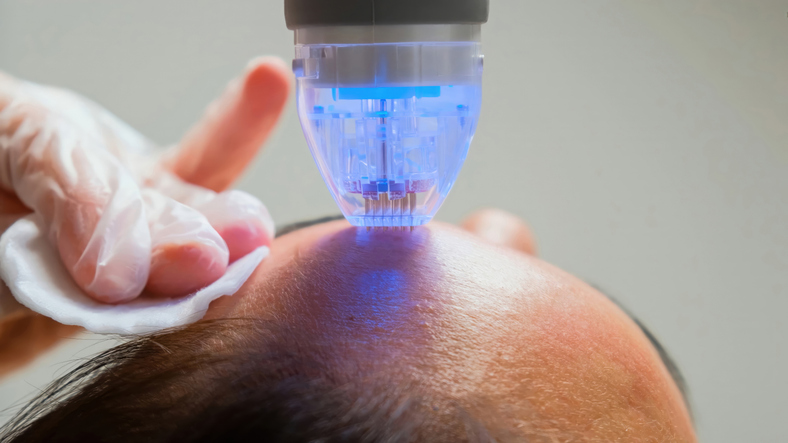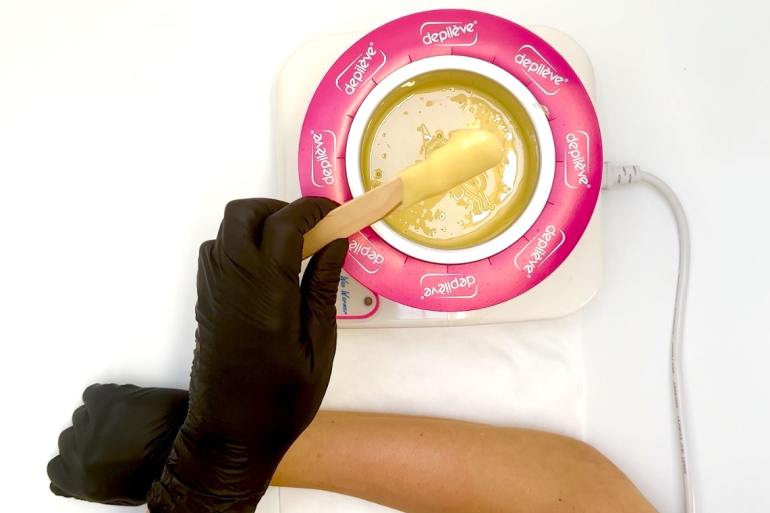If you want to grow your skills at your own pace and truly invest in your future — you’re in the right place. Thousands of students have already chosen Beauty Expert Online to gain internationally recognized beauty qualifications. Our online programs reach students in over 200 markets worldwide, giving access to modern, flexible beauty education — no matter where you live.
How Microneedling RF Transforms Skin Structure Through Dual Mechanical-Thermal Stimulation

Microneedling RF combines controlled micro-injuries with radiofrequency heat to stimulate deep regenerative processes in the skin. The needles create microchannels while RF energy warms the dermis, activating fibroblasts, growth factors, and collagen remodeling. This dual action improves firmness, texture, and skin density. The treatment is especially valued for lifting effects, scar refinement, and visible skin rejuvenation.
Microneedling RF has become one of the most in-demand skin-rejuvenation technologies because it addresses concerns that topical ingredients and classic microneedling often cannot reach. Clients look for solutions that tighten, smooth, and visibly rebuild the skin — and this method answers that need with high precision.
Many people struggle with loss of firmness, acne scars, enlarged pores, and uneven texture. They often invest in products or treatments that work only on the surface. Microneedling RF reaches deep into the dermis, where collagen and elastin are formed.
This article explains how the treatment works on a cellular level, what results you can expect, who benefits most, common mistakes to avoid, and how to safely combine Microneedling RF with other procedures.
How Microneedling RF Works — The Core Mechanisms
Microneedling RF synergistically combines mechanical stimulation (needle penetration) with thermal stimulation (radiofrequency heating).
Mechanical Micro-Injuries and Microchannels
- Ultra-thin needles penetrate the skin to a precisely selected depth.
- Each puncture forms a controlled micro-injury that does not damage tissues permanently.
- These microchannels act as a biological trigger initiating rapid regeneration.
Thermal Energy Delivered Directly Into the Dermis
- When the needles reach the desired depth, RF energy is released.
- Heat is delivered directly into the dermis, bypassing the epidermis.
- This warms collagen fibers to approx. 55–65°C, creating a thermal “shock” that contracts existing collagen and activates new synthesis.
Activation of Growth Factors and Fibroblasts
The controlled micro-injury stimulates the release of key growth factors:
- PDGF – boosts fibroblast proliferation
- TGF-β – regulates collagen synthesis
- FGF – accelerates keratinocyte and fibroblast activity
- VEGF – stimulates new micro-vessel formation
These signals initiate wound healing and intense tissue renewal.
Collagen Remodeling and Long-Term Firming
The treatment promotes:
- new collagen types I and III
- elastin regeneration
- reorganization of the extracellular matrix
- thickening and strengthening of the dermal structure
The final remodeling phase can last up to 6 months, creating long-lasting lifting and tightening.
Benefits and Expected Outcomes
Microneedling RF delivers multi-level improvement, especially in deeper skin layers.
- Visible lifting and tightening
- Thickening and densification of the dermis
- Reduction of fine lines and wrinkles
- Refinement of acne scars (including atrophic)
- Smoother texture and reduced pore size
- Evenness and healthier skin tone
- Improved elasticity and firmness
- Enhanced skin resilience and structural strength
Who Benefits the Most
Microneedling RF is particularly effective for:
- Clients with loss of firmness and skin laxity
- Visible aging signs (wrinkles, crepey skin)
- Acne scars or surgical scars
- Enlarged pores and uneven texture
- Skin that needs both tightening and regeneration
- Post-pregnancy or weight-loss texture changes
- Mature skin requiring collagen remodeling
Common Mistakes (and How to Avoid Them)
Mistake 1 — Using Too Shallow Needle Depths
Shallow settings stimulate only the epidermis, reducing collagen-building potential.
Fix: Adjust depth based on anatomical area and skin thickness.
Mistake 2 — Excessive Thermal Exposure
Too much RF energy can cause overheating and prolonged inflammation.
Fix: Use controlled, device-appropriate RF parameters.
Mistake 3 — Performing the Treatment on Sensitized or Compromised Skin
Compromised barriers increase risk of irritation and poor healing.
Fix: Stabilize the barrier before treatment.
Mistake 4 — Inadequate Post-Treatment Care
Using active ingredients too soon may disrupt healing.
Fix: Focus on hydration, repair, and photoprotection for at least 7 days.
Combining Microneedling RF With Other Treatments
Microneedling RF can be safely combined with:
- Chemical peels (in separate sessions)
- Mesotherapy or skin boosters (after healing)
- LED therapy (post-treatment to reduce inflammation)
- Classic microneedling (alternating protocols)
- Radiofrequency without needles (not on the same day)
Avoid combining with:
- strong acids in the same session
- retinoids during healing
- aggressive exfoliation
Risks, Contraindications, and Safety
Microneedling RF is generally safe when performed correctly, but contraindications include:
- active acne or active infection
- compromised skin barrier
- pregnancy
- keloid tendency
- autoimmune skin disorders
- anticoagulant therapy
- recent sunburn or tanning
Safety notes:
- Proper depth selection is crucial for predictable outcomes.
- Sterility and single-use needles are mandatory.
- Post-treatment SPF is essential.
Professional Insight
In professional practice, we often see that clients with atrophic acne scars experience the most dramatic improvements due to the combined thermal–mechanical stimulation. This dual action reaches deep into the dermis, where classic microneedling alone is often insufficient.
| Aspect | Mechanical Action | Thermal RF Action |
| Primary trigger | Micro-injury | Controlled heating |
| Depth of impact | Epidermis + dermis | Deep dermis |
| Main target | Cell regeneration | Collagen remodeling |
| Key result | Microchannels, growth factor release | Collagen contraction + neocollagenesis |
Table 1: Mechanical vs Thermal Effects (Microneedling RF)
| Phase | Timeframe | Key Processes |
| Inflammatory | 0–48 hours | Growth factor release, immune activation |
| Proliferative | 3–14 days | Fibroblast activity, angiogenesis |
| Remodeling | Weeks–months | Collagen type III → I transformation |
Table 2: Healing Phases After Microneedling RF
FAQ (People Also Ask)
Is Microneedling RF better than classic microneedling?
Yes — RF adds a thermal stimulus that dramatically enhances collagen remodeling.
How long do results last?
Up to 12–18 months, depending on lifestyle and skin condition.
Is the treatment painful?
With proper numbing cream, discomfort is minimal to moderate.
How many sessions are needed?
Most clients benefit from 2–4 sessions spaced 4–6 weeks apart.
Is Microneedling RF safe for all skin tones?
Yes — when performed correctly, it is safe for all Fitzpatrick types.
Can I use retinoids afterward?
Avoid retinoids for 7–10 days to prevent irritation.












